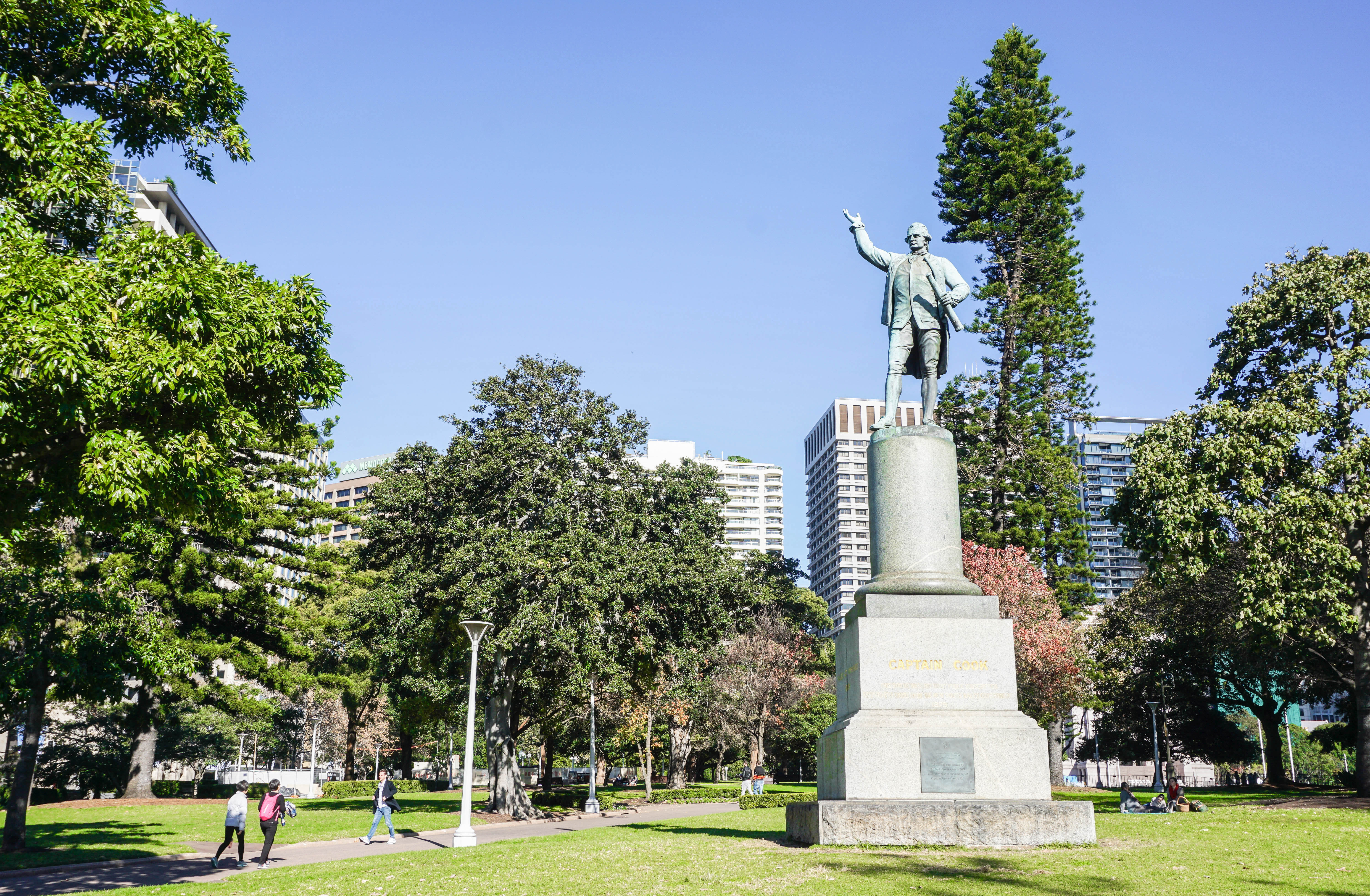Share This Article
Array
It is reported that two woman have been arrested and charged for allegedly defacing the Captain Cook statue in Sydney’s CBD.
At about 4am Sunday morning, police were contacted in respect to the statue in Sydney’s Hyde Park.
The two women aged 27 and 28 were arrested on College Street in Sydney CBD, not far from the statue. They allegedly had possession of multiple spray cans concealed in a bag.
In fact, investigation are underway In Victoria to find the perpetrators who defaced the statues in Ballarat. Tony Abbott and John Howard statues have also been defaced with spray paint on Saturday.
In Peth, the statue of Captain James Stirling was defaced, resulting in the arrest and charge of a 30-year-old male.
Monuments such as these are being defaced or destroyed in one way or another across the world, which all appear to be in response to the Black Lives Matter protests to address racism.
The law in New South Wales prescribes heavy penalties including criminal conviction for graffiti vandalism offences and damaging or desecrating protected places.
A protected place is defined as encompassing a statue or shrine in a public place. It includes the Captain Cook statue or the war memorial site.
The offence of damaging or desecrating a protected place does not attract a jail sentence, but it does attract a penalty of up to $4,400 with a criminal record, according to section 8 Summary Offences Act 1988 (NSW).
A person guilty of damaging a protected place such as a statue of Captain Cook in Sydney’s Hyde Park, by way of spray painting or defacing it in any way can be sentenced by the court to a Community Correction Order (CCO) with conditions of community service work, supervision and other restrictions (section 8 Crimes (Sentencing Procedure) Act 1999 (NSW)).
On the other hand, the Judge or Magistrate has the discretion to not impose a criminal record on an offender. This will occur if the offender is sentenced under section 10 or Conditional Release Order non-conviction.
Graffiti offences include intentionally marking premises or property without consent in circumstances where, a graffiti implement was used to mark it, including a spray paint designed to produce a mark not readily removable by wiping it or by use of water or detergent, or the marking occurred in a way that it’s not readily removable by wiping it or by the use of water or detergent).
Section 4 Graffiti Control Act 2008 (NSW) prescribes up to 12-months jail or $2,200 fine, or both to anyone guilty of graffiti vandalism offences in NSW.
Graffiti offences like these are not so straight forward when sentencing an offender in court. A court in NSW can only impose a jail sentence to an offender if the offender’s previously been convicted of the same offence, or of the offence of possessing graffiti implement, and if the court is convinced that the offender’s a serious and persistent offender who is likely to reoffend.
If a person makes the property leaving the mark to be ready removable by wiping it or by the use of water or detergent, or where the mark occurred without using a graffiti implement, the offender will face a maximum fine of $440, without a jail sentence.
There is an alternative charge under section 195 Crimes Act 1900 (NSW) of intentionally or recklessly destroying or damaging property from graffiti vandalism in NSW. It carries a penalty of up to 5-years jail with a criminal record.
A person will face this type of penalty if he/she damaging property, being property in a public place where the graffiti rendered the property ‘imperfect or inoperative’.
In these situations, graffiti that results in an expense and inconvenience to the local authority to remove it will generally be considered imperfect. The law can consider the marking as ‘damage’ under the law if the marking is temporary or able to be removed.
Click here for a through outline on the law on what constitutes damage in NSW.
Book a Lawyer Online
Make a booking to arrange a free consult today.
Call For Free Consultation
Call Now to Speak To a Criminal Defence Lawyer
Over 40 Years Combined Experience
Proven SuccessAustralia-Wide
Experienced LawyerGuarantee
 (02) 8606 2218
(02) 8606 2218
 (02) 8606 2218
(02) 8606 2218















